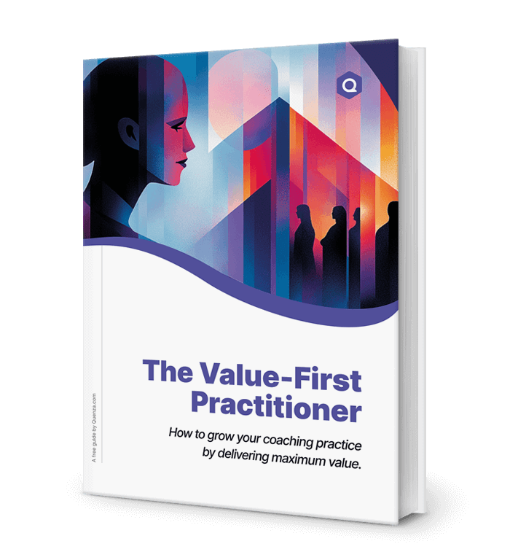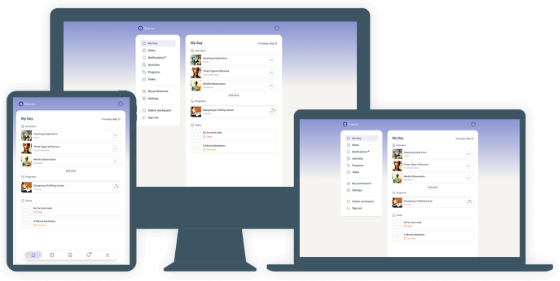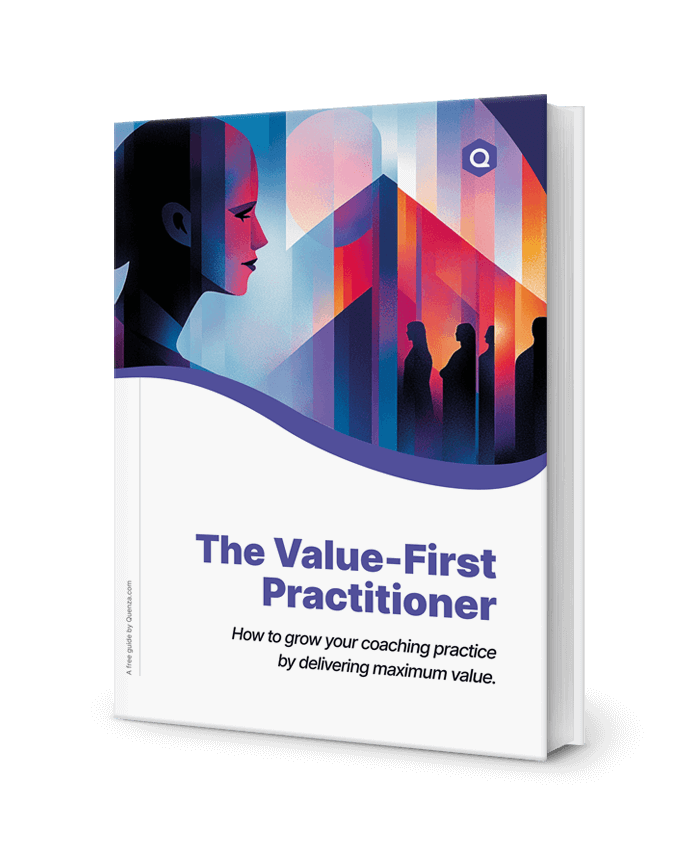In today’s fast-paced world, building and maintaining strong, lasting relationships can be challenging. Whether in our personal or professional lives, the ability to connect deeply with others is a crucial skill. This is where Neuro-Linguistic Programming (NLP) comes into play. NLP offers a set of powerful techniques that can dramatically improve our ability to communicate, understand others, and create meaningful connections [1].
In this blog post, we’ll explore how NLP can transform your relationships. You’ll learn practical techniques to establish rapport, enhance communication, and create positive emotional associations. By the end of this article, you’ll have a toolkit of strategies to build stronger, more resilient relationships in all areas of your life.
Whether you’re looking to improve your personal relationships, enhance your professional network, or simply become a better communicator, the NLP techniques we’ll discuss can help you achieve your goals. So, let’s dive in and discover how to harness the power of NLP for lasting connections.
Understanding Neuro-Linguistic Programming (NLP)
Neuro-Linguistic Programming, or NLP, is a powerful approach to understanding human behavior, communication, and personal development. Developed in the 1970s by Richard Bandler and John Grinder, NLP explores the relationship between how we think (neuro), how we communicate (linguistic), and our patterns of behavior (programming) [2].
At its core, NLP is based on the idea that by understanding and modifying these elements, we can dramatically improve our interactions and achieve better outcomes in various aspects of life, including our relationships.
Key Principles of NLP in Relationships:
- The Map is Not the Territory: This principle suggests that each person has their own unique perception of the world. In relationships, it reminds us that our partner’s view of a situation may differ from ours, encouraging empathy and understanding.
- There is No Failure, Only Feedback: This mindset helps in viewing relationship challenges as opportunities for growth rather than insurmountable problems.
- The Meaning of Communication is the Response You Get: This principle emphasizes the importance of being aware of how our communication is received and adjusting accordingly to ensure our message is understood as intended.
How NLP Relates to Relationships:
NLP provides a framework for understanding how we and others perceive the world, process information, and communicate. In relationships, this understanding can lead to:
- Improved empathy and understanding of your partner’s perspective
- Enhanced communication skills, reducing misunderstandings
- Better conflict resolution strategies
- Increased emotional intelligence and self-awareness
By applying NLP techniques in your relationships, you can create a deeper connection, improve mutual understanding, and build a stronger, more resilient bond. As we explore specific NLP techniques in the following sections, you’ll see how these principles can be practically applied to enhance your relationships.
| Presupposition | Application in Relationships |
|---|---|
| The map is not the territory | Recognize that each person has their own perspective |
| People are not their behaviors | Separate a person’s actions from their identity |
| Behind every behavior is a positive intention | Look for the positive intent in your partner’s actions |
| People make the best choice they can at the time | Assume your partner is doing their best |
| If what you’re doing isn’t working, do something else | Be willing to change your approach in conflicts |
Building Rapport: The Foundation of Strong Connections
Rapport is the foundation of any strong relationship, and it’s a key concept in NLP. It refers to the state of harmonious understanding with another individual or group. When you have rapport with someone, you feel a sense of connection, mutual trust, and responsiveness. In NLP, building rapport is considered a crucial skill for effective communication and relationship building [3].
Techniques for Establishing and Maintaining Rapport:
- Matching and Mirroring: This technique involves subtly mimicking the other person’s body language, tone of voice, and speech patterns. It’s based on the idea that people like others who are similar to them.
- Body Language: Match the other person’s posture, gestures, and facial expressions.
- Voice: Adjust your tone, tempo, and volume to match theirs.
- Language: Use similar words and phrases they use.
- Pacing and Leading: Start by pacing (matching) the other person’s current state, then gradually shift your own state to lead them to a different emotional state or perspective.
- Active Listening: Show genuine interest in what the other person is saying. Use nonverbal cues like nodding and maintaining eye contact to show you’re engaged.
- Finding Common Ground: Identify shared interests, experiences, or values. This creates a sense of similarity and connection.
- Empathy and Validation: Try to understand the other person’s perspective and validate their feelings, even if you don’t agree with them.
Practicing these techniques can help you quickly establish rapport in various situations, from first meetings to long-term relationships. As you become more adept at building rapport, you’ll likely notice improvements in your personal and professional relationships.
Remember, while these techniques are powerful, they should be used ethically and with genuine intent to connect, not to manipulate. The goal is to create authentic, meaningful connections that benefit both parties.
Effective Communication Strategies in NLP
Effective communication is at the heart of all strong relationships, and NLP offers several powerful strategies to enhance your communication skills. By implementing these techniques, you can improve understanding, reduce conflicts, and deepen your connections with others [4].
1. Active Listening
Active listening is more than just hearing words; it’s about fully engaging with the speaker and their message. In NLP, active listening involves:
- Giving full attention to the speaker
- Observing non-verbal cues (body language, tone of voice)
- Suspending judgment and avoiding interruptions
- Providing feedback through verbal and non-verbal cues
To practice active listening, try to focus entirely on the speaker, putting aside your own thoughts or responses until they’ve finished. Use encouraging phrases like “I see” or “Go on” to show you’re engaged.
2. Matching and Mirroring Techniques
Matching and mirroring are subtle ways to build rapport through communication. These techniques involve:
- Matching the speaker’s tone, speed, and volume of speech
- Adopting similar body postures and gestures
- Using similar language patterns or phrases
For example, if someone speaks slowly and softly, try to match their pace and volume. If they use a lot of hand gestures, you might incorporate more gestures into your own communication.
3. Reframing
Reframing is a powerful NLP technique that involves changing the context or meaning of a situation to view it more positively. In communication, this can help to:
- Resolve conflicts by offering new perspectives
- Turn challenges into opportunities
- Shift negative thought patterns to more positive ones
To use reframing, try to identify alternative viewpoints or interpretations of a situation. For instance, instead of seeing a disagreement as a problem, you could reframe it as an opportunity to understand each other better.
4. Sensory Acuity
Developing sensory acuity means becoming more aware of subtle changes in a person’s physiology, voice, or language. This can help you:
- Detect emotional states more accurately
- Recognize when someone is uncomfortable or disagreeing, even if they don’t say so
- Adjust your communication style based on the other person’s reactions
Practice observing small changes in facial expressions, breathing patterns, or skin color to develop this skill.
By incorporating these NLP communication strategies into your interactions, you can significantly enhance your ability to connect with others, understand their perspectives, and build stronger, more meaningful relationships.
| Technique | Description | Benefit |
|---|---|---|
| Mirroring | Subtly matching body language and tone | Builds rapport and trust |
| Reframing | Changing the context or meaning of a situation | Reduces conflict and promotes understanding |
| Anchoring | Creating associations with positive states | Quick access to helpful emotional states |
| Sensory acuity | Noticing subtle changes in others | Enhances empathy and understanding |
| Meta-model questioning | Asking specific questions to clarify information | Improves communication clarity |
The Power of Anchoring Positive Emotions
Anchoring is a powerful NLP technique that can significantly enhance your relationships by creating strong, positive emotional associations. An anchor is essentially a stimulus that triggers a consistent emotional state. By intentionally creating and using positive anchors, you can enhance the emotional quality of your interactions and strengthen your connections with others [5].
Understanding Emotional Anchors:
In NLP, an anchor is any representation in the human nervous system that triggers another representation. This could be:
- A touch (e.g., a pat on the back)
- A sound (e.g., a specific phrase or tone of voice)
- A visual cue (e.g., a certain facial expression)
- A smell or taste
Anchors can occur naturally (like feeling happy when you hear a song that reminds you of a good memory) or can be intentionally created.
How to Create and Use Positive Anchors in Relationships:
- Identify the Desired State: Determine what emotional state you want to anchor (e.g., love, happiness, confidence).
- Choose the Anchor: Select a unique touch, gesture, or word that you’ll use as the anchor.
- Induce the State: Help your partner (or yourself) enter the desired emotional state. This could be through conversation, recalling a happy memory, or visualization.
- Set the Anchor: At the peak of the emotional state, apply the chosen anchor (e.g., a squeeze of the hand).
- Test the Anchor: After some time, apply the anchor again and observe if it brings back the desired emotional state.
- Reinforce the Anchor: Repeat the process several times to strengthen the association.
Practical Applications in Relationships:
- Create a unique gesture that represents love and support in your relationship.
- Use a specific phrase as an anchor for feelings of appreciation and gratitude.
- Establish a visual cue (like a wink) that triggers feelings of playfulness and joy.
Benefits of Anchoring in Relationships:
- Quick access to positive emotional states
- Enhanced emotional connection between partners
- A tool for de-escalating conflicts by triggering positive emotions
- Creation of unique, meaningful gestures that strengthen the bond
Remember, the key to successful anchoring is consistency and repetition. The more you reinforce the anchor, the stronger and more effective it becomes. Used ethically and with care, anchoring can be a powerful tool for enriching your emotional connection and building a more resilient, positive relationship.
Reframing Perspectives for Conflict Resolution
Reframing is a powerful NLP technique that can transform the way we perceive and handle conflicts in relationships. It involves changing the conceptual or emotional viewpoint in relation to which a situation is experienced and placing it in a different frame that fits the facts of the situation equally well or even better. This shift in perspective can often lead to more positive interpretations and outcomes [6].
The Concept of Reframing in NLP:
Reframing is based on the NLP presupposition that every behavior or situation has a positive intention or purpose. By identifying and focusing on this positive intention, we can change our emotional response and find more constructive solutions to conflicts.
Types of Reframing:
- Context Reframing: Changing the context in which a behavior or situation is perceived.
- Content Reframing: Changing the meaning of a behavior or situation.
Practical Examples of Reframing in Relationship Conflicts:
- The “Nagging” Partner:
- Original Frame: “My partner is always nagging me. They’re so controlling.”
- Reframe: “My partner reminds me of things because they care about our shared responsibilities and want our household to run smoothly.”
- The “Workaholic” Spouse:
- Original Frame: “My spouse works too much and doesn’t care about family time.”
- Reframe: “My spouse is dedicated to providing for our family and ensuring our financial security.”
- The “Messy” Roommate:
- Original Frame: “My roommate is so messy. They’re inconsiderate and lazy.”
- Reframe: “My roommate has a different tolerance for clutter. They might be prioritizing other aspects of their life right now.”
Steps to Apply Reframing in Conflicts:
- Identify the current frame or perspective.
- Recognize the positive intention behind the behavior.
- Consider alternative interpretations that fit the facts.
- Choose a new frame that leads to a more positive emotional state and constructive action.
Benefits of Reframing in Relationships:
- Reduces negative emotions and stress in conflicts
- Promotes empathy and understanding
- Encourages creative problem-solving
- Improves overall communication and connection
By mastering the art of reframing, you can transform potential relationship conflicts into opportunities for growth, understanding, and deeper connection. Remember, the goal is not to ignore genuine issues, but to approach them from a more positive and constructive standpoint.
Enhancing Intimacy Through NLP Techniques
Intimacy is a crucial component of deep, meaningful relationships. NLP offers several techniques that can significantly enhance intimacy by improving emotional connection, understanding, and communication between partners. Let’s explore two powerful NLP approaches to fostering intimacy: sensory acuity and language patterns [7].
Sensory Acuity and Its Role in Deepening Connections:
Sensory acuity refers to the ability to notice subtle changes in another person’s physiology, voice tone, and language patterns. Developing this skill can greatly enhance your ability to understand and respond to your partner’s emotional states, leading to deeper intimacy.
How to Develop Sensory Acuity:
- Visual Cues: Pay attention to changes in skin color, muscle tone, and breathing patterns.
- Auditory Cues: Listen for changes in voice tone, tempo, and volume.
- Kinesthetic Cues: Notice shifts in body posture, gestures, and touch.
Practical Exercise: Spend 5 minutes each day observing your partner without speaking. Try to identify their emotional state based solely on non-verbal cues.
Language Patterns for Fostering Intimacy:
NLP recognizes the power of language in shaping our experiences and relationships. By using specific language patterns, you can create a stronger sense of connection and intimacy with your partner.
Effective Language Patterns:
- “We” Language: Use “we” instead of “I” or “you” to foster a sense of unity.
Example: “We could try this new approach” instead of “You should do it this way.” - Sensory-Rich Language: Use words that appeal to multiple senses to create vivid, shared experiences.
Example: “I love the warmth of your embrace and the soft sound of your voice.” - Positive Presuppositions: Frame statements in a way that presupposes positive attributes or intentions.
Example: “I appreciate how much thought you put into this” instead of “Did you think this through?” - Future Pacing: Talk about future events as if they’re certain, creating a shared vision.
Example: “When we celebrate our anniversary next year, we’ll remember this moment.” - Metaphors and Analogies: Use these to explain complex feelings or situations in a relatable way.
Example: “Our love is like a garden. It needs regular care and attention to flourish.”
Practical Application:
- Mindful Communication: Before speaking, take a moment to consider how your words might be received.
- Active Practice: Choose one language pattern to focus on each week and intentionally incorporate it into your daily interactions.
- Feedback Loop: Ask your partner how certain phrases or communication styles make them feel.
By honing your sensory acuity and consciously using intimacy-enhancing language patterns, you can create a deeper, more satisfying connection with your partner. Remember, the key is consistency and genuine intent – these techniques should be used to express authentic feelings and foster real understanding, not as manipulation tactics.
Conclusion
As we conclude our exploration of NLP techniques for building stronger, lasting relationships, it’s clear that these powerful tools can significantly enhance our ability to connect, communicate, and understand one another. Let’s recap the key NLP techniques we’ve discussed:
- Building Rapport: The foundation of strong connections, achieved through techniques like matching and mirroring.
- Effective Communication Strategies: Including active listening and the use of sensory-rich language to improve understanding and empathy.
- Anchoring Positive Emotions: Creating and using triggers to access positive emotional states quickly.
- Reframing Perspectives: A powerful tool for conflict resolution and seeing situations from new, more positive angles.
- Enhancing Intimacy: Using sensory acuity and specific language patterns to deepen emotional connections.
- Practical Daily Applications: Incorporating NLP techniques into everyday interactions while avoiding common pitfalls.
These NLP techniques offer a comprehensive toolkit for improving all types of relationships – romantic, familial, friendly, or professional. By mastering these skills, you can:
- Communicate more effectively and with greater empathy
- Resolve conflicts more easily and constructively
- Create deeper, more meaningful connections
- Understand yourself and others better
- Foster a more positive and supportive relationship environment
However, it’s important to remember that like any skill, mastering NLP techniques requires practice and patience. Don’t be discouraged if you don’t see immediate results. Consistent application and a willingness to learn and adapt are key to success [8].
As you move forward, we encourage you to start small. Choose one or two techniques that resonate with you and begin incorporating them into your daily interactions. Pay attention to the results, and don’t be afraid to adjust your approach as needed.
Remember, the goal of using NLP in relationships is not to manipulate or control others, but to create genuine, meaningful connections based on mutual understanding and respect. Used ethically and with good intentions, these techniques can transform your relationships and enrich your life in profound ways.
We hope this guide has provided you with valuable insights and practical tools to enhance your relationships. Here’s to building stronger, more fulfilling connections in all areas of your life!
Frequently Asked Questions
The time it takes to see results can vary depending on the individual and the specific techniques being used. Some people may notice improvements in their relationships within a few weeks of consistent practice, while for others it may take several months. The key is to be patient and persistent. Start with small, achievable goals and gradually build up your NLP skills. Remember, lasting change often occurs incrementally, so pay attention to subtle improvements in your communication and connection with others.
Yes, NLP techniques can be valuable tools in repairing damaged relationships. Techniques like reframing, anchoring positive emotions, and effective communication strategies can help partners gain new perspectives, manage negative emotions, and rebuild trust. However, it’s important to note that both parties must be willing to work on the relationship for NLP techniques to be effective. In cases of severe relationship damage or abuse, professional counseling should be sought in addition to or instead of NLP techniques.
While NLP can be highly beneficial, there are ethical considerations to keep in mind. The primary concern is the potential for manipulation if techniques are used with harmful intent. It’s crucial to use NLP ethically, with the goal of mutual understanding and benefit. Another potential drawback is over-reliance on techniques, which may lead to inauthentic interactions. Always prioritize genuine connection and use NLP as a tool to enhance, not replace, natural communication. If you’re unsure about the appropriate use of NLP in a specific situation, consult with a trained NLP practitioner or relationship counselor.
While NLP and couples therapy can both improve relationships, they have different focuses and methodologies. NLP primarily concentrates on communication patterns, internal representations, and behavior modification. It provides specific techniques for changing thought patterns and behaviors. Couples therapy, on the other hand, often delves deeper into relationship dynamics, past experiences, and emotional issues. It may involve more extended exploration of personal histories and relationship patterns. NLP can be a complementary approach to traditional therapy, offering practical tools that couples can apply in their daily interactions.
Absolutely! NLP techniques are highly versatile and can be applied effectively in professional settings. Techniques like rapport building, active listening, and reframing are particularly useful in workplace relationships. They can enhance team communication, improve leadership skills, and help in conflict resolution among colleagues. However, it’s important to adapt the techniques to suit the professional environment, ensuring they are used appropriately and respectfully within the boundaries of workplace relationships.
References
- ^ Kotera, Y., & Sheffield, D. (2017). Disney strategy for Japanese university students' career guidance: A mixed methods pilot study. Journal of the National Institute for Career Education and Counselling, 38(1), 52-61. https://doi.org/10.20856/jnicec.3808
- ^ Sturt, J., Ali, S., Robertson, W., Metcalfe, D., Grove, A., Bourne, C., & Bridle, C. (2012). Neurolinguistic programming: a systematic review of the effects on health outcomes. British Journal of General Practice, 62(604), e757-e764. https://doi.org/10.3399/bjgp12X658287
- ^ Deitsch, E. I. (2013). Neuro-linguistic Programming in Alcoholism Treatment. The Praeger International Collection on Addictions, 265-272. https://doi.org/10.1080/07347324.2013.800429
- ^ Linder-Pelz, S., & Hall, L. M. (2007). The theoretical roots of NLP-based coaching. The Coaching Psychologist, 3(1), 12-17. https://www.researchgate.net/publication/284038754_The_theoretical_roots_of_NLP-based_coaching
- ^ Heap, M. (2008). The validity of some early claims of neuro-linguistic programming. Skeptical Intelligencer, 11, 6-13. https://www.researchgate.net/publication/284038764_The_validity_of_some_early_claims_of_neuro-linguistic_programming
- ^ Wake, L., Gray, R. M., & Bourke, F. S. (2013). The Clinical Effectiveness of Neurolinguistic Programming: A Critical Appraisal. Routledge.
- ^ Witkowski, T. (2010). Thirty-Five Years of Research on Neuro-Linguistic Programming. NLP Research Data Base. State of the Art or Pseudoscientific Decoration? Polish Psychological Bulletin, 41(2), 58-66. https://doi.org/10.2478/v10059-010-0008-0
- ^ Zaharia, C., Reiner, M., & Schütz, P. (2015). Evidence-based Neuro Linguistic Psychotherapy: A meta-analysis. Psychiatria Danubina, 27(4), 355-363. https://pubmed.ncbi.nlm.nih.gov/26609647/



